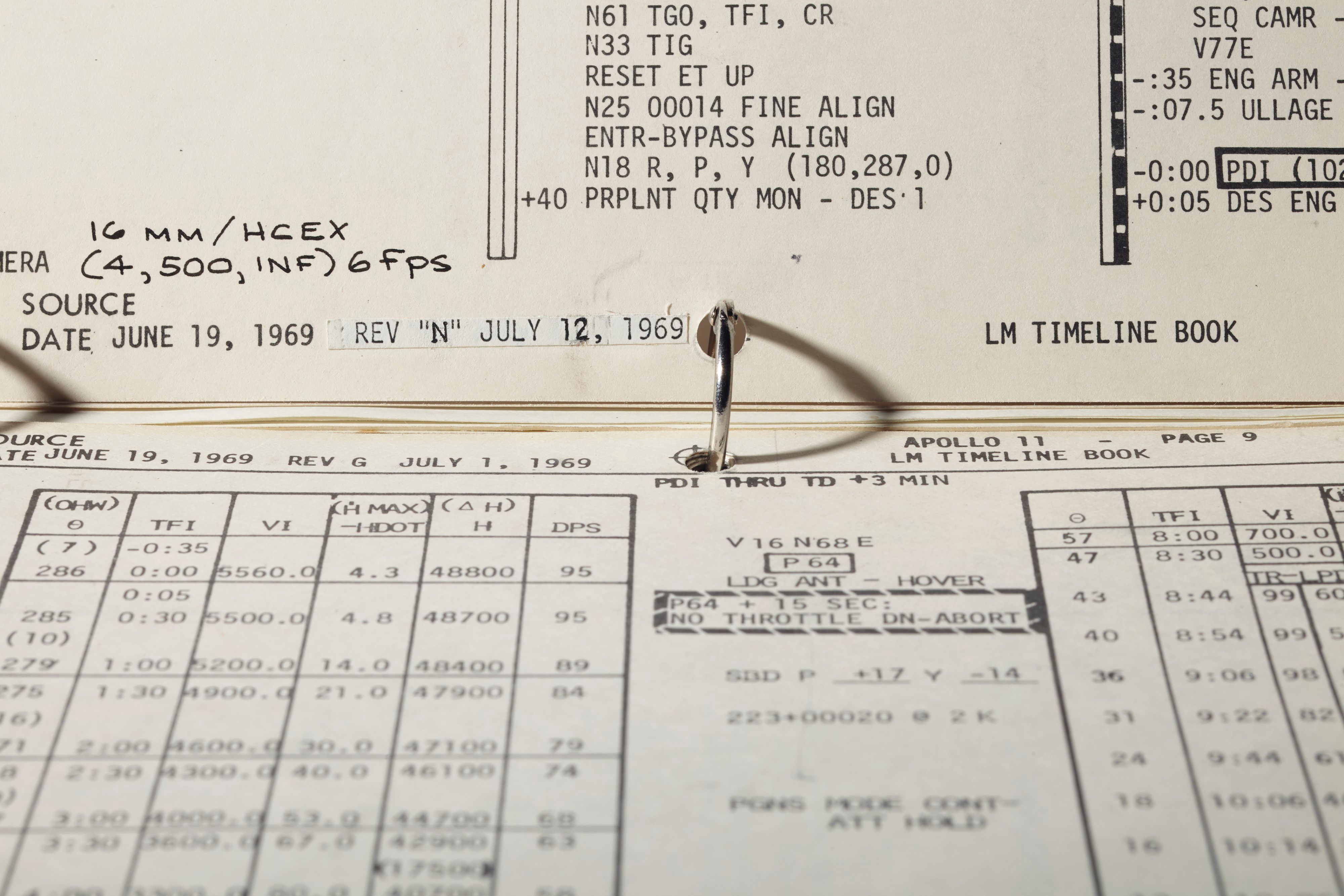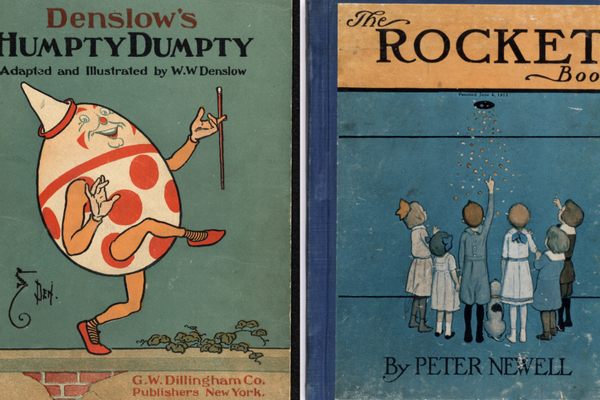For Sale: The Instruction Manual Used During the First Moon Landing
It includes the first writing from a human on another celestial body.

On July 20, 1969, the astronauts Neil Armstrong and Buzz Aldrin successfully landed on the moon for the first time in history. And in the summer of 2019, the manual that got them there will officially be for sale in an auction celebrating space exploration and the 50th anniversary of Apollo 11.
This lunar module timeline book was used by the two U.S. astronauts to land Eagle, the lunar module that allowed for exploration of the moon’s surface. This rare cardstock-covered manual contains 44 three-hole-punched pages of detailed instructions for the launch and descent of Eagle.
The time period that the book covers is the entire Lunar Module Eagle portion of the Apollo 11 mission, says Christina Geiger, head of books and manuscripts at Christie’s America.
This step-by-step manual offers rare insight into the process of conducting the first moon landing, particularly the fact that the NASA astronauts weren’t completely certain their mission could be completed. In the book, there’s a section that gives details based on whether they decide to stay or not stay on the moon. “It’s almost like a choose your own adventure,” Geiger says. “They have a box with steps to abort the mission [if necessary].”
Each individual sheet in this manual is marked with reports from the sky: the dates of the missions, what revolution the vessel was on, and the time stamps of the team’s completed tasks. The instruction list details the procedures that both the Apollo 11 commander (Neil Armstrong) and lunar module pilot (Buzz Aldrin) were supposed to complete.* “We counted 150 checkboxes, completion marks, and annotations which are almost exclusively numbers made by Armstrong and Aldrin in real time during the mission,” says Geiger.

Though several manuals of this sort exist, and people back on Earth at mission control likely would have had some iteration of the book to track the Eagle’s steps, this item is unique because it is the only one that actually made it to the moon aboard the lunar module, and that had Armstrong and Aldrin’s original handwritten notes in it.
This highly technical book was in Aldrin’s personal collection until he sold it to a private collector. Christie’s estimates that the anonymous consigner will get anything from seven to nine million dollars for this extremely valuable book. Says Geiger: “The reason people collect books is to get close to this moment of discovery… [to connect] with history in a way where you’re getting close to moments when the human imagination got a little bit bigger. ” To that point, historians know that the instruction manual was sitting right between commanders Armstrong and Aldrin as they descended upon the moon.
“The most exciting page is the one that represents the actual landing,” says Geiger. “And that has the first writing from a human on another celestial body… those are Aldrin’s handwritten landing coordinates.” These vital coordinates were written in the lunar mare known as the Sea of Tranquility.
According to a press release, there was no video recording and only an imperfect audio recording of the astronauts in Eagle, so this manual provides one of the only first-hand accounts of the moon landing.* The Apollo 11 Lunar Module Timeline Book will be on public view in New York starting May 3 through May 17, 2019, and will then travel the world visiting Hong Kong, Beijing, and Seattle, Washington, before landing back in New York for its official auction on July 18.
*Correction: This article originally stated that the manual lists procedures for Michael Collins, the command module pilot, and Buzz Aldrin. The manual was actually used by Neil Armstrong and Aldrin, not Collins. Additionally, the post stated that this manual was the only first-hand account of the moon landing. However, Aldrin has written a book about the experience.










Follow us on Twitter to get the latest on the world's hidden wonders.
Like us on Facebook to get the latest on the world's hidden wonders.
Follow us on Twitter Like us on Facebook